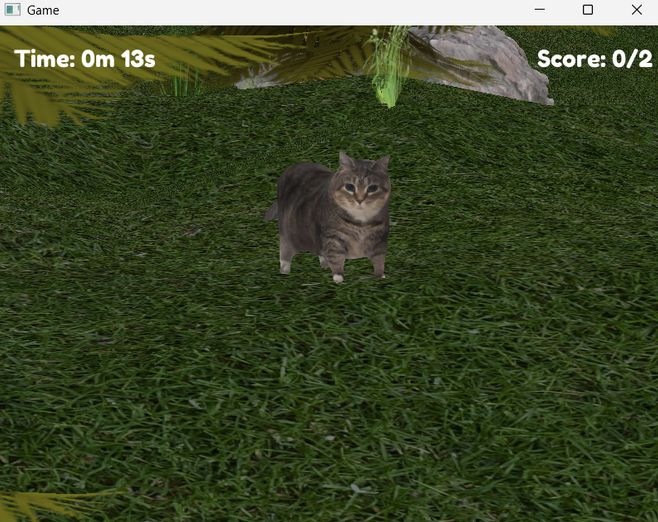Star-Collecting 3D Game
A 3D game developed from scratch in raw C++ using OpenGL for graphics rendering, featuring a player navigating a terrain to collect stars.
Technologies Used
Project Overview
This project was a deep dive into low-level 3D graphics programming, where I developed a star-collecting 3D game from scratch using raw C++ and the OpenGL library. The game features a player character navigating a procedurally generated or heightmap-based terrain, collecting stars scattered across the landscape.
My Role & Key Contributions
As the sole developer, my responsibilities encompassed all aspects of 3D game development:
- 3D Graphics Rendering (OpenGL): Implemented core 3D rendering pipelines using OpenGL, including:
- Vertex and Fragment Shaders: Wrote custom GLSL shaders for rendering terrain, stars, and player models.
- Camera Control: Developed a free-look camera system, allowing player movement and view manipulation.
- Lighting: Basic lighting models to enhance visual realism.
- Terrain Generation/Rendering: Implemented methods to create and render a 3D terrain, potentially using heightmaps or simple procedural generation techniques.
- Object Loading & Rendering: Loaded and rendered 3D models for stars and the player character.
- Collision Detection: Developed basic collision detection between the player and stars for collection mechanics.
- Game Loop & State Management: Managed the main game loop, updating game state, handling input, and rendering frames efficiently.
- Mathematics for 3D: Applied principles of linear algebra (vectors, matrices, transformations) for object positioning, rotation, and camera manipulation.
Technical Challenges & Solutions
Developing a 3D game from scratch in raw C++ and OpenGL presented numerous low-level challenges:
- Setting up OpenGL Context: Properly initializing OpenGL and managing the rendering context.
- Shader Programming: Learning and writing GLSL shaders to control how objects are rendered. This required understanding the programmable pipeline.
- Matrix Transformations: Accurately applying model, view, and projection matrices to correctly position and orient objects in 3D space and project them onto the 2D screen. Debugging incorrect transformations was a significant learning curve.
- Resource Management: Efficiently loading and managing vertex buffers, textures, and other graphics resources.
- Game Loop Synchronization: Ensuring the game logic and rendering were synchronized within the main loop to maintain a consistent frame rate.
Impact & Learnings
This project provided a profound understanding of:
- Low-Level 3D Graphics: Gained foundational knowledge of how 3D graphics are rendered, from vertices and shaders to transformations and lighting.
- OpenGL API: Practical experience with the OpenGL API for creating interactive 3D environments.
- C++ for Performance: Understanding how C++ can be used for performance-critical applications like game development.
- Mathematical Foundations of Graphics: Applied linear algebra concepts directly to real-time rendering.
- Problem Solving: Developed strong problem-solving skills in a complex, visually driven domain.
Visual Showcase
 Screenshot showing the player character and collected stars.
Screenshot showing the player character and collected stars.